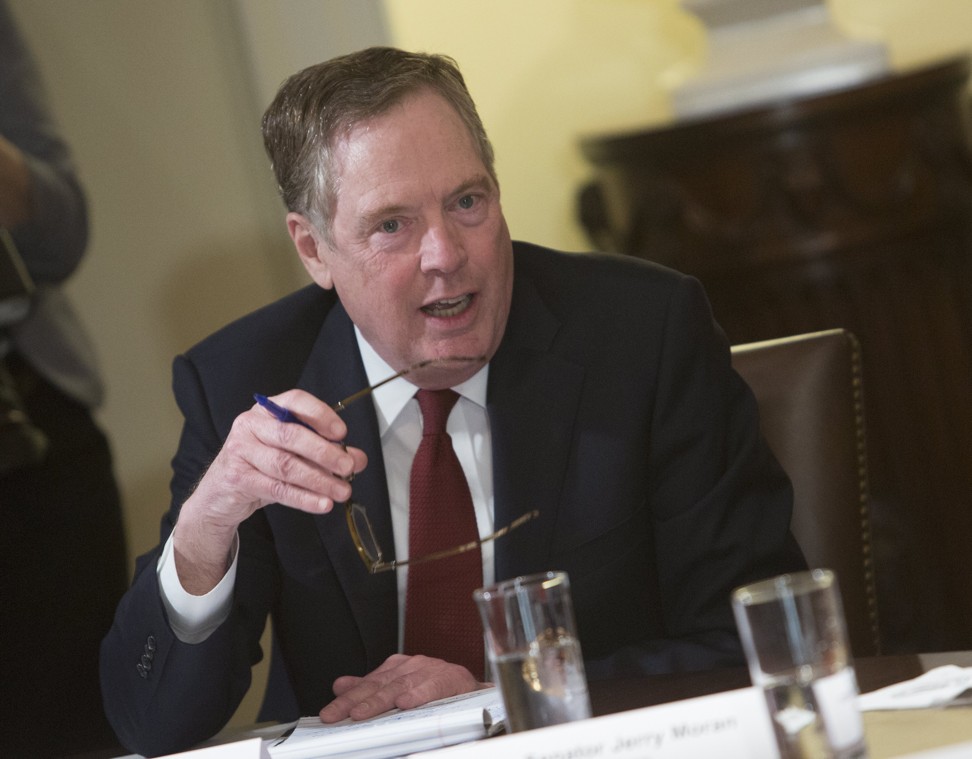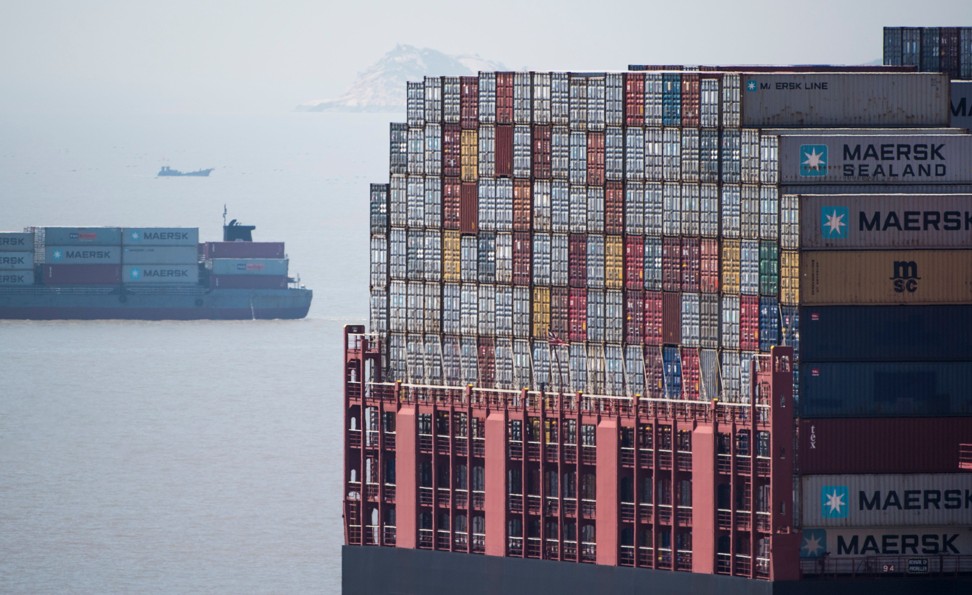
Analysis | Expect tough talk when US trade hawks visit China, not an end to the row
Analysts say next week’s trip will help to ease tensions, but the dispute won’t be resolved any time soon
Expectations are low that China’s trade squabbles with the US can be easily resolved, as three of the biggest hawks in US President Donald Trump’s administration prepare for a joint trip to Beijing next week.
US Trade Representative Robert Lighthizer, National Economic Council head Larry Kudlow, and White House trade adviser Peter Navarro will accompany US Treasury Secretary Steve Mnuchin to Beijing on Thursday and Friday, where they are scheduled to meet Chinese officials including President Xi Jinping and Vice-President Wang Qishan.
“We do not expect to see a fundamental solution, but the two countries will try to cool down the confrontation,” said Tu Xinquan, director of the China Institute for WTO Studies at the University of International Business and Economics. “The talk will be tough, and it’s unlikely they can solve the conflict in just one trip. This confrontation will continue for a while.”

There are ominous signs that the dispute could be protracted. On Friday, Lighthizer kept China on a “priority watch list” of 12 countries, including Canada, with problematic or deteriorating environments for intellectual property, in Washington’s annual global violation report. He also slammed China for what he called “unfair” and “backward” intellectual property protection laws.
Tu said the talks would be exploratory and the US was likely to continue to pressure China, with a wish list including the demand for a timetable on when China will expand market access.
China is expected to say more about pledges to open its markets made by Xi at the Boao Forum this month, including new energy vehicles. It could also open the internet sector and is expected to push forward negotiations to join the WTO’s government procurement agreement, Tu said.

Early this month, the US released details of US$50 billion of Chinese imports, some 1,300 products, that could be subject to punitive 25 per cent tariffs. The plan is open for public comment until May 11 and a hearing for US businesses will be held on May 15.
Beijing fired back with plans to impose the same amount of tariffs on US products such as soybeans, airlines and vehicles.
A spokesman for the US trade representative on Wednesday said the trade actions could come soon after the comment period closes.
Washington is also looking at imposing tariffs on another US$100 billion worth of Chinese products.
A new US investigation into China’s cloud computing industry is also being considered, according to sources, under section 301 of the Trade Act of 1974. That legislation has already been used to investigate intellectual property.
Meanwhile Mnuchin is said to be taking the lead on measures to restrict Chinese investment in sensitive sectors in the US, and Congress is working on tightening controls on exports to China.
Lu Xiang, a specialist on US issues with government think tank the Chinese Academy of Social Sciences, said he was “cautiously optimistic” about next week’s talks.
“[But] the US should terminate the Section 232 [steel and aluminium] and Section 301 measures before the two countries start to negotiate the issues in detail,” Lu said. “If the US officials come here to make accusations and quarrel, we won’t see any results from these talks.”

Given the long-standing trade imbalance between the two countries, finding the middle ground could be difficult.
Beijing has insisted it will open up, but as long as Trump is in power, confrontations over trade are unavoidable, said Yu Miaojie, vice director of the National School of Development at Peking University.
“It’s a good sign that both countries are open to talks on the trade issues, but there could be a vast gap between what they’re asking for and what is being offered,” Yu said.
The trade row also reflected US concerns about China’s rapid progress in technology, as well as its state subsidies and intervention to boost its competitiveness, according to Tu.
“The US wants to maintain its technology advantage over China but it also wants to benefit from China’s development,” he said.
But Tu did not believe the economic confrontation between the two sides would be resolved any time soon. “The right timing for a fundamental solution ... is yet to come,” he said.

